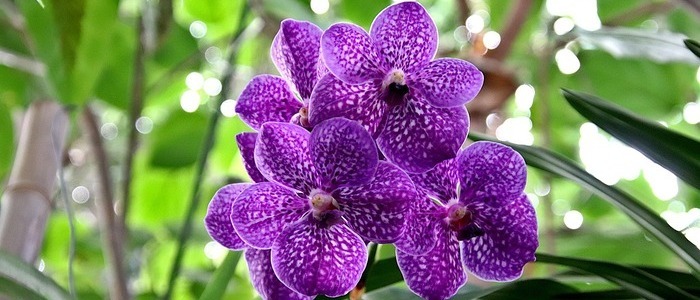Identifying the Butterfly Bush is an essential step in its successful growth and care. The Butterfly Bush, also known as Buddleja davidii, is a deciduous shrub that can grow to heights of up to 8-12 feet. Its leaves are lanceolate and silvery green, arranged oppositely along the stem. While it can take on many shapes and sizes, its most identifying feature are its blooms which come in a variety of colors including purple, pink, white and yellow. These fragrant flowers attract a variety butterflies and other pollinators which make them a stunning addition to any garden.
The butterfly bush is native to China and Japan but can also be found growing in North America. It prefers well-drained soil with full sun exposure for optimal growth, however they will generally tolerate partial shade as well. When planted in the right conditions with proper care this shrub will be sure to brighten up your garden!

Butterfly Bush Frequently Asked Questions
.Is the butterfly bush winter-hardy?
Yes, the butterfly bush is winter-hardy in most regions. It can tolerate colder temperatures and even survive frost and snow. However, in extremely harsh winter conditions, it is recommended to provide some extra protection, such as mulching around the base of the plant or covering it with a burlap sack. Overall, with proper care, the butterfly bush can thrive and continue to attract beautiful butterflies, even in colder climates.
Can the butterfly bush be grown indoors?
The butterfly bush is typically grown outdoors as it requires plenty of sunlight and space to grow. However, it is possible to grow a butterfly bush indoors under the right conditions. To successfully grow it indoors, ensure that the plant receives at least six hours of direct sunlight per day and is planted in a large enough pot with well-draining soil. Regular pruning and careful monitoring of humidity levels will also be necessary to maintain the health and growth of the butterfly bush.
Tips for Growing and Caring for the Butterfly Bush
Growing a Butterfly Bush is relatively easy as long as you provide it with the right conditions. This shrub requires at least 6 hours of direct sunlight per day for optimal growth, so be sure to select an appropriate area of your garden that gets lots of sun. It also needs well-draining soil with a neutral pH, so if the soil in your garden is too acidic or alkaline, you should consider amending it with organic matter like compost or manure.
Supplemental water is necessary during extended dry periods to ensure that your butterfly bush has enough moisture to thrive. You may also need to fertilize your shrub occasionally to give it all the nutrients it needs for optimal growth; a balanced fertilizer applied twice per year (once in spring and once in summer) should do the trick.
When planting your butterfly bush, remember that this shrub has low drought tolerance and can suffer from wilting quickly when not given enough water. To avoid this, make sure you are providing plenty of supplemental water during dry spells and keeping an eye on the soil’s moisture levels throughout the season.
If you notice any signs of wilting, such as yellowing leaves or drooping branches, take steps immediately to provide additional water.
Overall, providing plenty of sun and making sure your butterfly bush has access to well-draining soil with a neutral pH will help ensure that this plant thrives in your garden for many years to come!
How to Prune the Butterfly Bush
Pruning a Butterfly Bush is essential for maintaining its health and beauty. Pruning should be done in late winter or early spring, before any new growth begins to appear. When pruning, it’s important to keep in mind that the bush only needs to be trimmed back lightly – too much pruning can damage the shrub.
To begin, use sharp pruning shears to trim back thin shoots and branches that have become overgrown. Be sure to make clean, angled cuts close to the base of the branch or shoot in order to prevent any potential disease from taking hold. Additionally, if any dead or diseased branches are detected, they should be removed completely.
If your Butterfly Bush has become overgrown or out of shape, you can perform a hard cutback of the entire bush. To do this safely and effectively, use sharp pruning shears and cut all branches back to 15-20 cm (6-8 inches) above soil level. This will encourage new growth and create a beautiful shape for your shrub.
Finally, it’s important not to forget about any secondary stems that may have grown around the main stem of your Butterfly Bush. These need to be trimmed back as well in order for the primary stem to receive enough light and air circulation for healthy growth. With proper pruning techniques and regular maintenance throughout the year, your Butterfly Bush will remain healthy and beautiful for years to come!
How to Propagate the Butterfly Bush
If you’re looking to create a stunning array of butterfly bush blooms in your garden, then propagation is the way to go. Start by selecting healthy stems during the spring and summer months, and make sure they are free from any pests or diseases. Then use sterile tools to take cuttings that are 6-inches long and dip them into rooting hormone powder or liquid. Place them in moist soil or a rooting medium so that it stays moist but not soggy, and provide plenty of water during dry spells without overwatering as this will cause root rot.
With proper care and attention, you can easily propagate butterfly bush in no time at all! The result will be an abundance of fragrant blooms throughout your garden year after year – a great way to add some color to otherwise dull corners or fill up borders for maximum impact. So if you’re ready to reap the rewards from propagating your own Butterfly Bush plants, now is the perfect time!
When do Butterfly Bushes Bloom
The butterfly bush is a beautiful and fragrant shrub that blooms from mid-summer to early fall. Its flowers come in a variety of colors, including white, pink, purple, or blue, and are known to attract butterflies and hummingbirds. Depending on the environment, the bloom period can last up to 8 weeks and can be extended by deadheading the spent blooms.
To extend the bloom period of your butterfly bush, it is important to ensure proper care for the plant throughout the year. This includes providing adequate sunlight and water as well as removing dead or wilted blooms as soon as possible. Deadheading encourages new buds to form on existing stems which in turn prolongs flowering time.
Additionally, it’s important to fertilize your butterfly bush twice a year with an organic fertilizer such as compost tea or manure tea once in spring before new growth begins and once in summer after flowering has finished for maximum health benefits. Finally, pruning should also be done regularly in order to encourage new growth and keep the shrub healthy and looking its best.
With proper care and attention, you can enjoy a stunning display of colorful blooms on your butterfly bush throughout summer into early fall each year! Not only that but by providing a hospitable habitat for local insects like butterflies or hummingbirds, you will contribute positively towards protecting our precious wildlife species at risk of extinction due to loss of habitat.
Common Pests and Diseases Found in the Butterfly Bush
Common pests and diseases can be a major problem when it comes to caring for the Butterfly Bush. It is important to keep an eye out for signs of damage or infection, as these can quickly spread and cause serious damage to the shrub. Here are some common pests and diseases that you should watch out for:
Aphids are tiny insects that feed on the sap of plants, causing yellowing and curling of leaves. They can also leave behind a sticky residue known as honeydew which attracts ants. Spider mites are another common pest that feed on plant tissue, leaving behind white webs between branches. Caterpillars may also be present on the Butterfly Bush, which will feed on the leaves of the bush and cause them to become wilted or discolored.
Fungal diseases such as powdery mildew or leaf spot can affect a Butterfly Bush if it is not properly cared for or has been exposed to too much moisture in its environment. These diseases will appear as grayish-white spots or patches on the leaves and stems of the shrub, eventually leading to leaf drop if left untreated.
Scale insects may also be present, which appear as small bumps along the stems of the bush that secrete a sticky substance known as honeydew which attracts ants. Mites are another pest which will suck out sap from leaves and leave behind silvery trails. Finally, viruses like Tomato Spotted Wilt Virus (TSWV) can attack a Butterfly Bush if it is exposed to infected plants in its environment or if there is damage caused by other pests such as caterpillars or mites.
While it’s important to identify any pests or diseases early on so they don’t cause too much damage, there are steps you can take to protect your Butterfly Bush. First make sure your soil drains well and has plenty of organic matter; water at ground level rather than overhead; keep debris away from your bush. Inspect plants regularly for signs of disease; use insecticidal soap sprays; and prune regularly. This will help with air circulation around branches – this will also help with preventing fungal growth due to dampness.
Conclusion
The Butterfly Bush is an attractive and fragrant shrub that can provide a stunning addition to any garden with the right conditions and proper care. This blog post has provided an overview of how to grow and care for it, including identifying it, growth requirements, pruning, propagation, blooming period, and common pests and diseases.
By following these tips on caring for your Butterfly Bush, you can ensure that your bush remains healthy and beautiful year-round. Additionally, by providing adequate sunlight and water, deadheading spent blooms regularly, fertilizing twice a year, inspecting plants for pests or disease regularly, and pruning at least once per year for air circulation you can be sure to get the most out of this wonderful addition to your garden.
If you are looking for further resources on learning how to grow and care for a Butterfly Bush or any other plant in your garden or landscape bed then there are many helpful websites available online. Additionally there are many products designed specifically for growing these shrubs such as fertilizer mixes tailored towards different types of soil or pest repellents designed to keep your butterfly bush free from harm.
Thank you so much for taking the time to read this blog post! We hope that this article has been informative in helping you learn how to grow and care for a Butterfly Bush in your own garden. If you have any questions or comments please feel free to leave them below!













